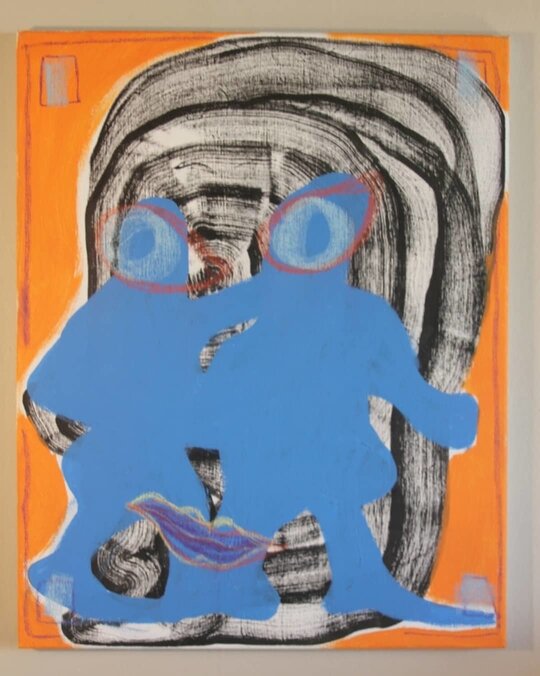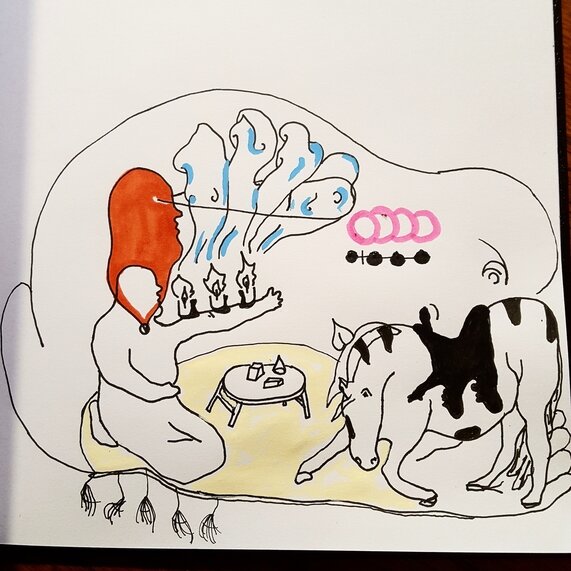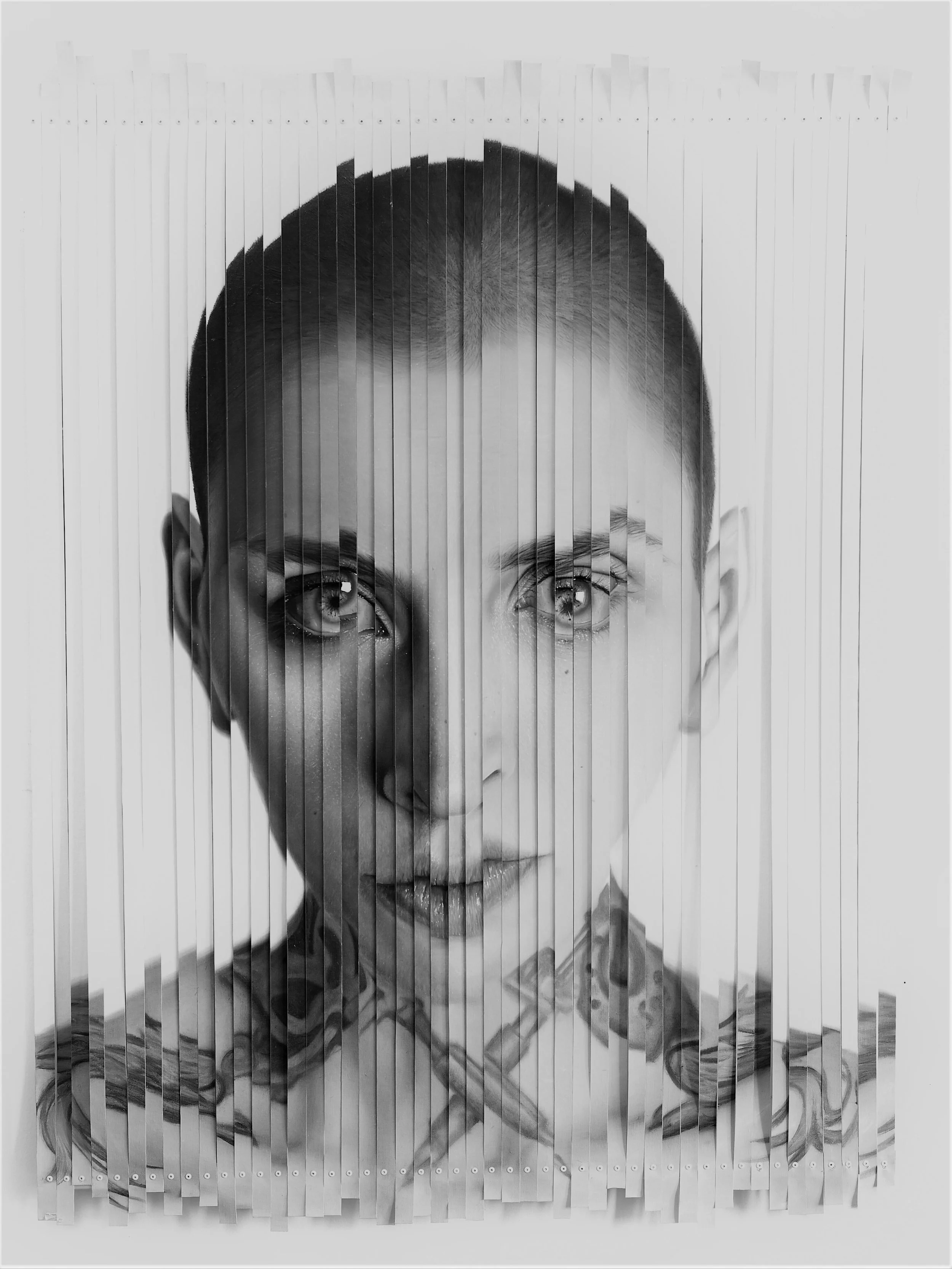LEHMAN NOVIELLO
Lehman Noviello creates many works on the surfaces of restaurant take out menus while using a distinctive large dry brush method. In this interview, he talks about his background in art, the reasons for his attraction to Chinatown menus as canvasses, and what it has been like to gain some wider attention recently for his work.
Interview by Tyler Nesler
Have you been drawing and painting from an early age? When did you realize that you wanted to pursue art seriously?
Yes, I started drawing and keeping a sketchbook at around ten years old. I used it as an outlet at a young age because I always had a lot of time to myself and tended to explore my imagination in great detail. I have been a traveler and drifter for most of my twenties, but I decided a few years ago that it was time to start putting my efforts into my art, and specifically focusing on this style because it was a style that I wasn't seeing done. I wanted to stand out, so I started to develop it more and more, working basically every day at it since 2016.
You've said that for much of your life you've felt as if you're standing on an observation deck recording the "atmosphere of emotions" and trying to interpret both sides of every story. How do you attempt to stay totally open to all perspectives? What are the challenges of maintaining this openness, and how do you think this translates to what you put down on paper or canvas?
I think that it’s important to approach things neutrally, because you can get too caught up in investing emotion and energy into things that you don't have much control over. Things change so quickly now because we are living in an information age. That makes it difficult to hold onto any concrete ideals or beliefs. I think it's better in the long run to just let go and observe, rather than try to control. Backed by the understanding that I am merely an observer, I am able to maintain a more positive outlook. I try to always maintain a sense of openness because I feel it leaves me with more options as far as illustration goes.
Much of your work is done on the surface of restaurant menus. What attracts you to menus in particular as a canvas?
Right now I'm working on a series that is all on menus because I feel that it kind of stands out. Originally, I had only done one or two pieces on menus, but when I finished them I thought they looked so cool and weird — that they had unique dimension. I decided I wanted them to be a tribute to NYC because New York has given me so much inspiration. A lot of the ideas that I used on the menus I came up with while walking the streets of the city, especially Chinatown where there is so much happening in every moment. The Chinatown take out menu is almost like a relic of New York. Chinatown is mysterious and sort of like a place of worship for me within the city.
You currently use a large dry brushing method for many of your pieces. What is it about this method that appeals to you, and how do you think it best expresses your creative intentions at this time?
I started using it when I bought a brush for a mural that I did in Seattle and it got dried out. I was trying to draw with it in my sketchbook and the lines looked so crazy to me that I had to keep doing it. I ended up finding my own style and developing techniques. Every line I drew had to be deliberate in order to produce what I was looking for. Each line comes out unique, and you can’t go back and paint over it. In a way, it has more permanence to it than other painting tools and mediums. You have to be sure of the line that you are about to do and have a picture in your head of where the piece is going as a whole. In my process, I imagine a picture that comes to me and then begin to sculpt it in my head. Then I begin to use my brush to construct it.
“Pouncing Deer”
“Walking the Pet”
Many of your pieces are fairly surreal/trippy, containing figures with double or joined heads and bodies made of looping lines, mixed in with unexpected objects — who are some artists that are particular influences on you with this style?
Mathieu Larone, David Henry Nobody Jr, Toothtaker, Lance De Los Reyes, Robert Nava, Les Rogers.
You've been gaining some wider attention recently with pieces exhibited at the Juxtapoz Superchief Gallery Fall 2019 Group Show. What are your thoughts on being at this level of commercial exposure so early in your career? How do you think monetary valuation and concern over sales effects young artists, in positive or negative ways?
When I was accepted into the Superchief show, it was unbelievable for me and I didn't know how to take it at first. Then it turned into positive reinforcement that pushed me to work harder and faster. I started creating more and more everyday. I was definitely sweating the fact that I would be in a group show with such amazing artists that I could only dream to be in with. When I got over the worry of harsh criticism, I was able to turn and look at how my works appeared on the wall of the gallery together, and see peoples reactions to them.
The idea of monetary valuation has definitely changed in my head many times over the last few years because I kept losing sight of the fact that I was doing it for myself at the end of the day. The process of creation was what led me down the road in the first place. If you try to create things that sell, you could find yourself selling a lot but not feeling great about the process behind it at all. So I think that for people like me, we just have to keep doing it without money being anywhere near the motivation behind it, because we will always have to answer to ourselves and to our own conscience at the end of each day. I definitely think that people should learn how the marketing aspects work, but I think that it is very easy to experience dissolution and lose self value if you are finding yourself not selling at all. We should try to create less barriers in our heads that we have to break down ourselves.
What's coming up for you in the near future? Any particular shows or works that you would like people to know about?
Right now I have about a hundred menus in my series that I'm working on for a New York show in the spring. I also am in a group show in Portland at Focus Group Shop that will be happening in December.
View more of Lehman’s work on his site and on Instagram.
You might also like our interviews with these artists:
Tyler Nesler is a New York City-based freelance writer and the Founder and Managing Editor of INTERLOCUTOR Magazine.











